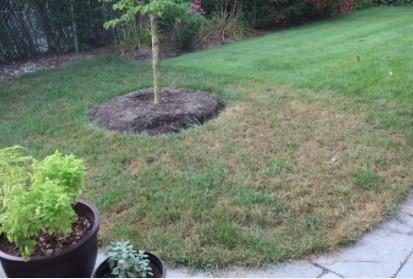
A drought stressed spot in the lawn is one of the first signs of fall armyworm damage.
The first sign of fall armyworm damage to a yard is a spot that appears to look drought stressed. That spot will expand, or other spots will appear as the worms move across the lawn. Fall armyworms tend to feed 24/7 and are hidden in the lower zone of the turf. Homeowners can dump a jug of soapy water on their lawn to get the worms to rise to the surface.
The caterpillars have a distinguishable “Y” shape on the back of their head and three stripes that run down the middle of their bodies.
The integrated pest management traps at Princeton started reporting their first fall armyworm sightings in May of this year.
Fall armyworms will remain active until the first frost of the season.
Larson said the fall armyworms are too far along in their development for organic pest control methods to be effective. If the pest is found in large numbers, homeowners can spray an insecticide that contains either a pyrethroid (like bifenthrin or lambda-cyhalothrin) or carbaryl. Homeowners will have to renovate damaged areas of turf as it is unlikely to bounce back. Some may also choose to do nothing to control the insect and simply renovate their lawns next spring.
Source : uky.edu